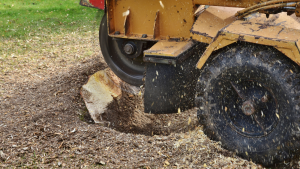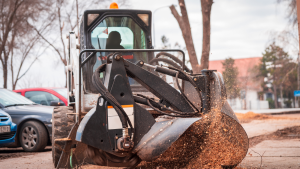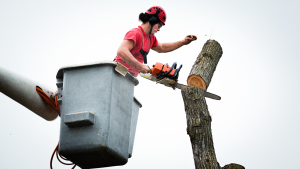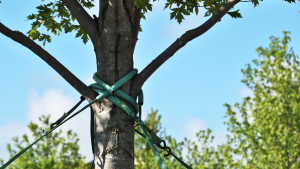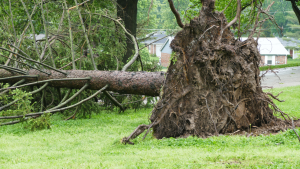Whether you choose to do it yourself or employ experts like us, cutting down a tree on your property can be a difficult task. Here are some initial steps, what to anticipate, and what you’ll need.
Examine the Area
It can be the beginning of a large process to have a tree on your property that needs to be removed. Make careful to inspect the area as the initial step. Is it okay to remove major limbs, branches, or the tree itself? Is there a danger to people or property? If so, it could be wiser to employ a specialist. Look out for these things:
- Diseases
- Is the tree healthy and only needs to be cut down?
- Are any of the limbs dead?
- Unlike live limbs, which frequently remain on or relatively close to the tree as it falls, artificial limbs can be thrown across great distances.
- Is anything blocking the way?
- A tree is considerably taller than you think, and in order to ensure its safety, it needs a very big fall line. Is there enough room for the tree to fall safely?
Make sure you are using the appropriate tools.
Once you are aware of a safe location to cut down a tree, it is time to make sure you have the necessary tools. What is required
- To prevent your eyes from being harmed by splinters or other particles, wear safety glasses.
- Ear plugs: Although chainsaws are rarely considered, they are quite loud and can harm hearing if you don’t use the right safety gear.
- Wear a hard hat; any falling debris could injure you severely.
- Gloves: Gloves are useful for ensuring that you maintain a solid grip and don’t slip in addition to protecting your hands.
- Cut down a tree or limbs using a chainsaw.
- Felling wedges: Even though most do-it-yourselfers don’t use them, they are essential and can guide the tree’s fall in the proper direction.
Always verify your local laws before cutting down a tree because your city, county, or HOA might need a permit or a certified arborist to do so.
Reduce Length and Prepare Your Route
It’s important to remember this even if we just discussed it when chopping down a tree. Check your fall line again to make sure you have more space than necessary. We advise hiring a pro if you believe it will be close or “there should be ample room.” A tree falling can easily tear through your roof, destroy a car, and shatter the pool’s foundation.
Make sure you have a route to securely exit the tree if it starts to fall or if something unforeseen occurs while you are cutting the tree. Your best option is to engage a professional if the tree is tall enough and needs to be chopped into several portions while still standing. You can find yourself in danger if you trip or take a long way out. Make sure the path is well-lit.
Proper Cutting
It can seem difficult and illogical to cut down a tree. What side of the tree is the heaviest and has the most growth is the first thing to look for. It happens frequently that individuals will start to cut down a tree without realizing that, despite cutting in all the appropriate places, the tree is actually weighed to fall in the opposite way. Make sure you are aware of the tree’s preferred direction of fall and how to avoid it if it deviates from your fall line.
start chopping. If everything else is done correctly, the tree will fall on whichever side you cut it.
- Cut at a suitable height.
- It is best to work at a comfortable height. Cutting too high or too low can be risky.
- 45-degree angle cuts
- You’ll be making a notch, so the top of the notch will be at an angle, and the bottom of the cut will be flat. This enables the saw to operate efficiently and reduces blade pinching brought on by the pressure of the tree bending.
- Little Cuts Add up
- You are not completely removing the tree. Start by making cuts in the tree trunk that extend about a third of the way through.
- Put your wedges to use as needed.
- Small trees can usually be cut down without too much difficulty, but old-growth trees need special chainsaws that are the correct size or wedges.
- Wedges prevent the tree’s pinch on the blade from adding unneeded pressure.
The Fallen Cut
You should make the final cut once you have notched on the proper side. You will make a 180-degree or flat cut just above the top of the notched area. Instead of attaching these, the idea is to let the tree lean under its own weight and strain. Utilize your route to safety whenever the tree begins to lean and move. The tree should fall into the setup if everything is done correctly.
The act of cutting down a tree is far more difficult than most people realize. Reach out to us to discover how we can assist if you’re searching for a safe, effective, and skilled tree removal team in the northeast.

